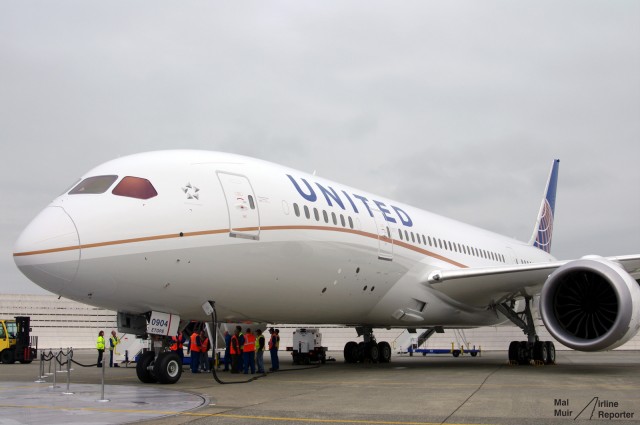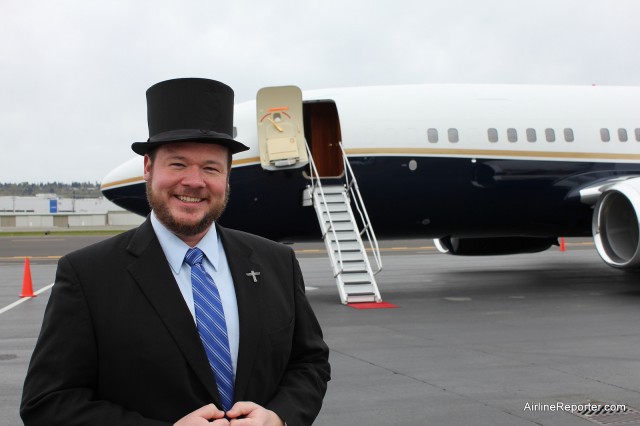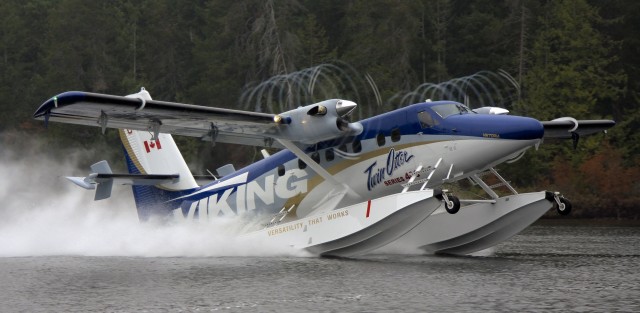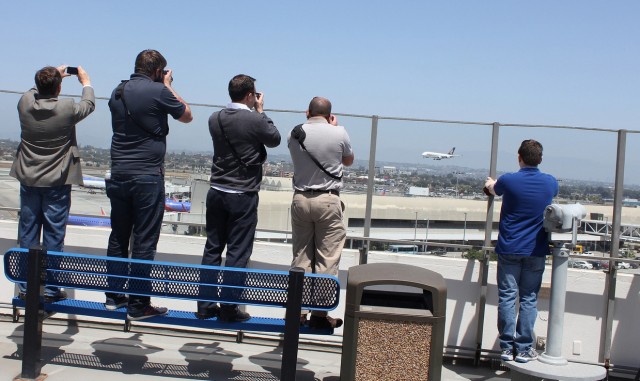
United Airlines First Boeing 787 on Launch Day at the Boeing Factory in Everett. Phone: Mal Muir airlinereporter.com
Recently United Airlines decided to increase their change fee on all domestic bookings from $150 to $200 per person. US Airways followed suit shortly after. Eventually Delta & American matched. With those change fees in mind, it got me thinking, “where is the spectrum of these fees in the US right now?”
Before we look at all the change fees each airline charges, we first need to look at what a change fee is and why airlines charge them. A ’œChange Fee’ to the airlines is a fee that is charged when you need to change the date or time on your flight booking. On heavily discounted airfares, changes are restricted so that you can be given the cheapest price possible. At least’¦ that’s the idea. In essence this is a fee charged by the airline, as a penalty to you for changing your mind.
Changing the airfare on the airline’s end probably doesn’t cost them much, if anything. In this day and age of overselling most flights, the airline has probably already sold it within seconds of your change.

A ride like this deserves a top hat. BBJ parked at Boeing Field and me ready to fly.
BOEING BUSINESS JET 737 REVIEW BASICS
Airline: Haha, who flies on airlines?
Aircraft: Boeing 737-700 BBJ1
Departed: King County International Airport [aka Boeing Field] (BFI)
Arrived Airport: Ted Stevens Anchorage International Airport (ANC)
Stops: Non-stop
Class: Yes, there was lots of class
Seat: Jump seat, big chair, nice couch, bed and another big chair.
Length: About 3 hours.
Cheers: Too many to list. It also gave me an excuse to purchase and wear a top hat.
Jeers: I had to get off.
Overall: If you have the means, I highly recommend picking one up. Also, if you do, can I have a ride?

Stop on the ramp while to take a panoramic photo of your aircraft? Sure! Photo by Jason Rabinowitz.
When you think of airports that appeal to AvGeek, a certain few will always come to mind: St. Maarten, Los Angeles, or maybe Paine Field. Some airports that probably don’t come to mind might be West Palm Beach, Burbank, and Ft. Lauderdale, but maybe they should.
In most major American airports, passengers flow directly from the terminal to the aircraft by the use of a jet bridge, never truly getting a good view of the aircraft they are about to board. At some airports, however, if you play your cards right, you are able to board the plane from the ramp, getting an epic view of your soon to be aircraft as you enter through the door. At some locations there passengers can both board from a jetway in the front and via the ramp in the back.

Twin Otter – Series 400 on Amphibious Floats – check out the prop vortices!
Photo: Viking Air
You know what it’s like. You look in the closet, and see that well-worn leather jacket hanging there. It keeps you warm, you know it makes you look good, but it’s showing its age. The zipper might not work so well or a pocket lining might be a bit torn. You take care of it – it’s been repaired and cleaned many times. You’ve been thinking about getting a new one, but you can’t find one anywhere, because styles and materials have changed over the years. So you keep wearing it and wearing it and wearing it.
AvGeeks know that there are a few airplanes that are like that. Love ’˜em, can’t replace ’˜em! The venerable Douglas DC-3 is one. Never duplicated, and still flying with airlines like Buffalo Airways of ’œIce Pilots NWT’ fame, even though the last DC-3 rolled off the assembly line in 1947.
The deHavilland Canada DHC-6 Twin Otter is another. Amazing Short Take Off and Landing (STOL) capability, twin bulletproof Pratt & Whitney Canada turboprops, decent cruise speed, has 19 seats, or it can carry a whack of cargo. The final Series 300 ’œTwotter’ was produced in 1988 at the DHC plant in Toronto. Over 800 Twin Otters were produced, and 600 are still flying on land, sea and snow, from pole-to-pole and on every continent. An amazing statistic. Operators said that the only thing that can replace an old Twin Otter is a NEW Twin Otter. But new ones weren’t available, so operators kept flying them and flying them and flying them.

AvGeeks on top of the Theme Building at LAX taking photos of a Singapore Airlines Airbus A380.
When Singapore Airlines came to me and pitched doing something with a small group of AvGeeks at LAX to watch their Airbus A380 land and depart, I was instantly interested and with almost no details said, “yes please.”
Almost five years ago, when I started AirlineReporter.com, I had a hard time defining this passion that I had for airlines and aviation. Once I gained some readers and was able to start defining who we all are (we are AvGeeks), very few airlines got it.
I don’t blame them. It is hard to get how to interact with this group of people that dedicate a large portion of their lives with airliners. Either researching, looking at photos, taking their own photos, flying on them or in my case blogging on them. But we are a force and some airlines, like Singapore, are starting to get who we are — and they like us.




